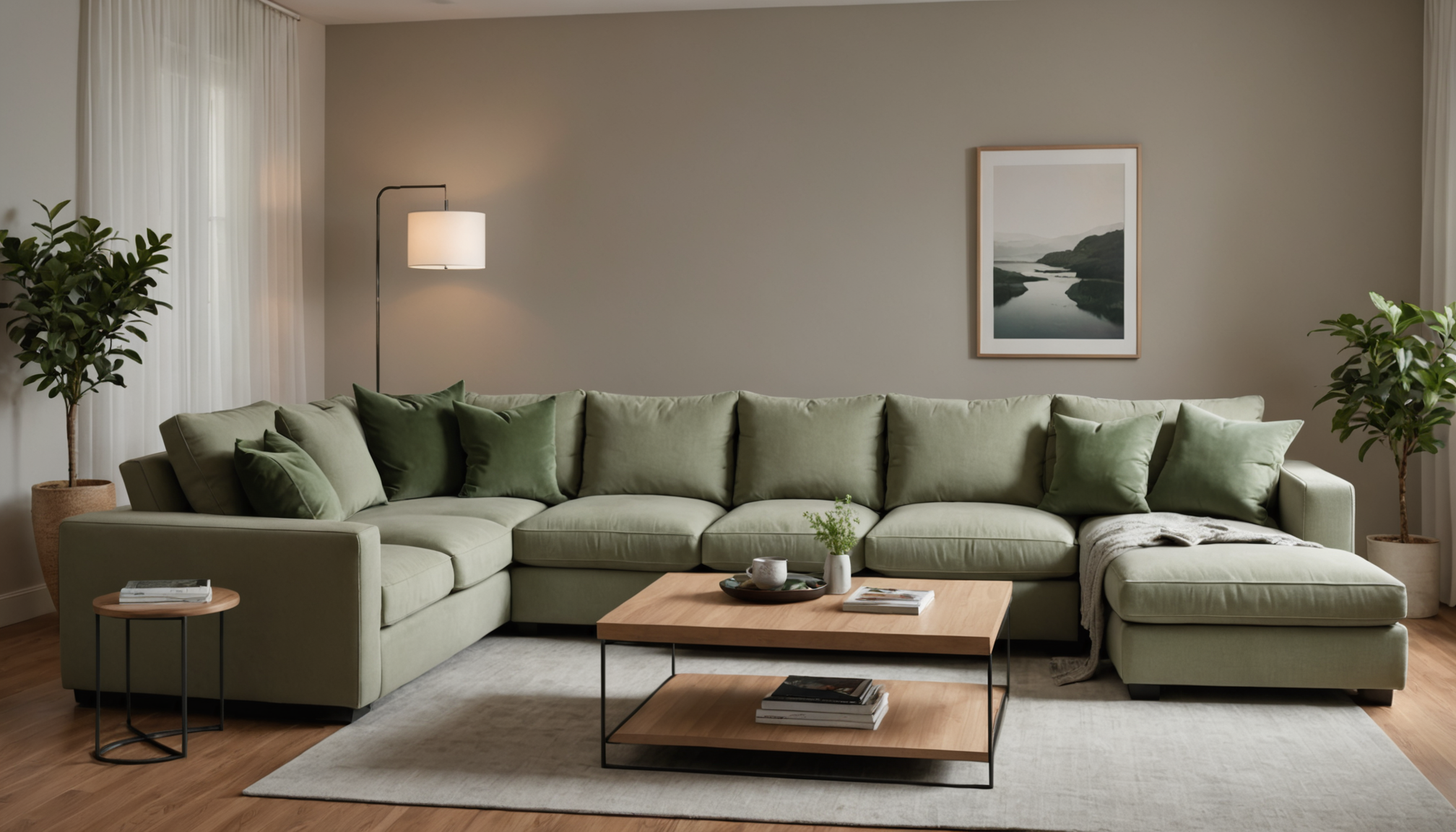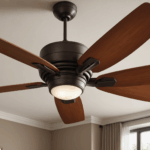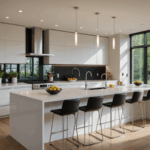Identifying outdated elements in your living room is an essential step for any homeowner looking to rejuvenate their space. Over time, interior design trends evolve, leaving certain features feeling antiquated and out of place. By recognizing these elements, you can make informed decisions that bring a fresh, modern aesthetic to your living room. This process is crucial not only for enhancing your living environment but also for increasing the overall value of your home.
One of the most common outdated elements in living rooms is the color scheme. Often, the colors that seemed trendy a decade ago now appear dull and out of touch. Check for colors like dull greys, beiges, or any heavily saturated shades that do not mesh with current decor trends. Replacing these with contemporary colors can instantly uplift the space. Consider these hues for a modern vibe:
- Warm neutrals, like taupe or soft whites
- Bold accent colors used sparingly to add interest
- Earthy and organic tones, such as terracotta or sage green
Beyond color, furniture is another pivotal aspect. Large, cumbersome furniture pieces once celebrated for their durability might now obstruct flow and function in your living room. Evaluate whether your furniture supports a versatile lifestyle and adapts to current family needs. Replace bulky items with sleek, multifunctional furniture that offers storage solutions or converts, such as a sofa bed or extendable dining table. These modern options provide functionality while maintaining aesthetic appeal.
Outdated lighting fixtures can also detract from the room’s potential. Chandeliers adorned with gaudy crystals or heavily patterned lampshades may not suit contemporary tastes. Opt for minimalist designs, LED fixtures, or smart lighting solutions that enhance the room’s ambiance without overpowering it.
Consider a comparison between old and new elements within your living room, guided by the table below. This will help illuminate which areas need immediate attention:
| Element | Outdated | Modern Replacement |
| Color Scheme | Muted, overwhelming tones | Neutral, earthy shades with accents |
| Furniture | Bulky, single-purpose pieces | Sleek, multifunctional designs |
| Lighting | Heavy, ornate fixtures | Sleek LEDs or smart lighting |
In your assessment, don’t overlook the small details. Elements such as door handles, switch plates, and flooring can impact the cohesiveness of your design. Vintage brass fixtures or intricate patterns in floorings may not seamlessly blend with modern decor trends. Replacing these with simple, yet elegant options can bring a streamlined look to your living space.
By meticulously identifying and replacing outdated elements, homeowners can ensure their living rooms reflect personal style while aligning with contemporary designs. With a commitment to transforming these spaces, your living room can become a harmonious part of your home that both family and guests appreciate.
choosing a new color palette
When transforming your living room, choosing a new color palette is a vital step that can dramatically change the atmosphere and perception of the space. A well-selected color scheme can create cohesion, highlight architectural features, and even influence mood. Here’s a step-by-step guide to help you choose the perfect colors for your living space:
- Understand the Basics of Color Psychology:
- Colors can evoke emotions; for instance, blues and greens often promote calmness and relaxation, which are ideal for living spaces.
- Evaluate how you use your living room. If it serves primarily as a relaxation area, you might choose softer hues, whereas, for entertainment or family gatherings, you might opt for more vibrant shades.
- Evaluate the Room’s Natural Light:
- Observe the natural light your living room receives throughout the day. Rooms with abundant natural light can handle darker, richer colors, while rooms with limited light may benefit from lighter hues to prevent the space from feeling confined.
- Consider the Fixed Elements:
- Identify fixed elements like flooring, built-in cabinets, or stone fireplaces, as these will influence your color choice. You’ll want a palette that complements these elements harmoniously.
- Choose a Dominant Color:
- Select a dominant color to cover the majority of your walls. Neutral tones such as beige, grey, or soft whites offer versatility and can serve as a backdrop for other vibrant additions.
- Select Complementary Accent Colors:
- Once you’ve chosen your primary color, incorporate one or two accent colors. These should complement the dominant shade and can be used for accessories, artwork, and textiles like cushions or curtains.
- Consider earth tones, like terracotta or sage green, as accent colors to add warmth and dimension.
- Create a Test Area:
- Before fully committing, test your chosen colors in a small area. Paint swatches on the wall and observe them at different times of the day to see how lighting affects their appearance.
- This test run can provide homeowner tips on how different hues can appear under various lighting conditions, ensuring the end result aligns with your vision.
- Incorporate Texture and Pattern:
- Introduce texture with materials like rugs, throws, or textured wall panels in your chosen color scheme. Patterns can be added through wallpaper or upholstery and will make your living room feel more layered and interesting.
- Seek Inspiration and Feedback:
- Explore online galleries, magazines, or even designer showrooms for inspiration. Gather feedback from family members to ensure the colors resonate with everyone who uses the living room.
By following these steps, you can confidently replace outdated colors with a fresh, coherent palette that revitalizes your living room. Whether your living space is predominantly used for family gatherings or as a quiet retreat, selecting the right color scheme can improve both its aesthetic appeal and functionality.
selecting multifunctional furniture
When redesigning your living room, choosing the right furniture is pivotal, especially considering the contemporary need for multifunctionality. Modern living spaces often require furniture that is adaptable, space-saving, and practical without sacrificing style. This approach not only maximizes usability but also breathes new life into your living area.
Multifunctional furniture serves numerous roles, making it an excellent choice for homes of all sizes, particularly for those with limited space. For instance, a sofa bed is ideal for accommodating overnight guests without the need for an extra bedroom. This type of furniture ensures your living room can quickly transform from a family lounging area to a comfortable sleeping quarters.
Moreover, furniture pieces with built-in storage are invaluable. Coffee tables with shelving or hidden compartments can house books, games, or media equipment, keeping the room clutter-free and organized. This functionality is a boon for homes with minimal storage space, providing a solution without adding additional furniture.
Selecting items like nesting tables or extendable dining tables allows flexibility for various occasions, from intimate family dinners to larger gatherings. Pieces that easily adapt to different needs help maintain an uncluttered environment while enhancing the room’s versatility.
Compact seating solutions such as modular sofas offer the ability to rearrange and configure seating arrangements to suit different activities, whether it’s watching a movie with family or hosting friends. This adaptability is essential in maintaining an inviting and functional space.
Another idea is incorporating furniture with wheels, making it easy to rearrange and adapt your space for different functions, whether it’s a family movie night or an impromptu party. This kind of flexibility keeps the space dynamic and responsive to changing needs.
Finally, it’s important to focus on aesthetics without compromising functionality. Multifunctional pieces are now available in various styles and materials, ensuring they can complement the vision you have for your living room. Choose materials and designs that enhance your new color palette and bring harmony to the overall room decor.
By opting for multifunctional furniture, homeowners can efficiently replace old or oversized pieces, revitalizing the living room’s functionality and appearance. This approach not only makes the space more practical but also aligns with modern trends that value both style and utility.
enhancing lighting solutions
Lighting plays a crucial role in transforming the ambiance of your living room. It’s not just about brightness but creating the right atmosphere to reflect your lifestyle and preferences. When considering updates, look beyond simply replacing a fixture and explore the potential of various lighting solutions to enhance your space.
Start by assessing the current lighting sources in your living room. Are they functional, or do they merely exist as a relic of outdated trends? For example, if your living room has fluorescent or overly warm incandescent lighting that casts unflattering shadows, it might be time to explore more modern solutions. Consider incorporating adjustable LED lights, which offer both energy efficiency and long-lasting performance. These can be customized to change colors and intensities, allowing you to adapt the setting according to your mood or event requirements.
Integrating layered lighting is an effective strategy to balance functionality with aesthetics. Use a combination of ambient, task, and accent lighting to create a versatile environment. Ambient lighting, such as ceiling-mounted fixtures, provides overall illumination, while task lighting focuses on specific activities like reading or studying. Accent lighting, perhaps in the form of subtle track lights or under-shelf LEDs, highlights unique architectural elements or decor.
Pay attention to the design of the fixtures themselves. Replacing heavy, ornate fittings with minimalist designs can dramatically alter the room’s perception. Opt for sleek metal finishes in fixtures to align with contemporary design trends. Furthermore, explore smart lighting systems that promote convenience and efficiency. Systems like these, which can be operated via smartphone or voice assistants, offer homeowners a modern touch that aligns with current technological trends.
In addition, consider natural light as an integral part of your lighting scheme. Curtains and blinds should not only complement your color palette but should also facilitate the flow of natural light, fostering a sense of openness and warmth. Mirrors can also be strategically placed to reflect light, making the living room appear larger and more inviting during daylight hours.
Remember to consider your family’s needs and preferences; a living room that’s mainly used during the evenings might benefit from a different lighting plan compared to one flooded with daylight and used throughout the day. Incorporating dimmers allows for flexibility in light intensity, catering to every occasion, whether it’s a cozy family movie night or an energetic gathering with friends.
Finally, don’t overlook the opportunity to express personal style through unique lighting elements. An artistic floor lamp or an avant-garde pendant light can become a conversation piece, adding personality and flare to the setting while aligning with the room’s functional requirements.
By thoughtfully enhancing your living room’s lighting solutions, you ensure it doesn’t just serve its purpose but becomes a dynamic space that enhances your overall home environment. This approach encourages more effective use of space, aligning with modern design principles that advocate for both style and practicality.
incorporating personal touches
Adding personal touches to your living room is an excellent way to create a space that feels truly unique to you and your family. Personalization not only makes your living room more inviting but also turns it into a reflection of your style and experiences. Achieving this can be done through a variety of avenues, each adding depth and character to your home.
One effective way to incorporate personality into your living room is through artwork. Consider hanging pieces that resonate with you—whether they are paintings, photography, or prints. Choose works that tell your story, maybe a travel photo from a special vacation or a painting done by a family member. Art is a universal language that breathes life into walls and becomes a focal point that draws attention.
Textiles are another powerful way to infuse personal style. Use pillows, throws, and rugs in patterns and textures that align with your taste. These elements are not only practical, adding comfort and warmth, but also serve as a canvas for colors and designs that reflect your preferences. Layering different materials like wool, cotton, and linen can create a cozy yet sophisticated room.
Incorporate family heirlooms or vintage finds to add authenticity to your decor. A well-placed antique vase or a classic lamp handed down through generations can be a conversation starter and lend a sense of history to your space. These items contrast beautifully with more modern elements, creating balance.
Bookshelves filled with carefully selected literature not only look impressive but showcase personal interests. Whether your passions lie in fiction, history, or home improvement, your collection speaks volumes about who you are. Consider organizing them with a balance of vertical and horizontal stacking to add visual interest.
Personalization can also extend to small decorative objects that hold significant meaning for you. Miniatures, travel souvenirs, or curated finds from local artisans add individual flavor. These pieces bring depth to your living room and can be strategically placed on side tables, mantels, or shelves.
Don’t forget about plants; they are a living element that can be personalized to suit both aesthetic desires and maintenance capabilities. Whether you prefer the sculptural elegance of a fiddle leaf fig or the easy-care charm of succulents, plants invigorate your living room with natural beauty. They also improve air quality, making your environment healthier and more refreshing.
Lastly, displaying photographs of cherished memories—printed in black and white for a classic touch or full color for vivid recollection—brings a personal warmth that’s unmatched. They can be arranged in a gallery wall or scattered individually throughout the room, offering glimpses into cherished moments and loved ones.
By thoughtfully incorporating personal touches, you transform your living room from just another part of the house into a meaningful space that tells your story. This approach makes your home uniquely yours, fostering an environment that’s welcoming, warm, and reflective of your life’s narrative.
Incorporating personal touches into your living room isn’t just an opportunity to express individuality; it elevates the space into a genuine extension of your household. As you replace outdated elements, a well-chosen new color palette, multifunctional furniture, thoughtful lighting solutions, and these personalized elements collaboratively ensure a harmonious blend of modern style with comforting familiarity and personal flair.


